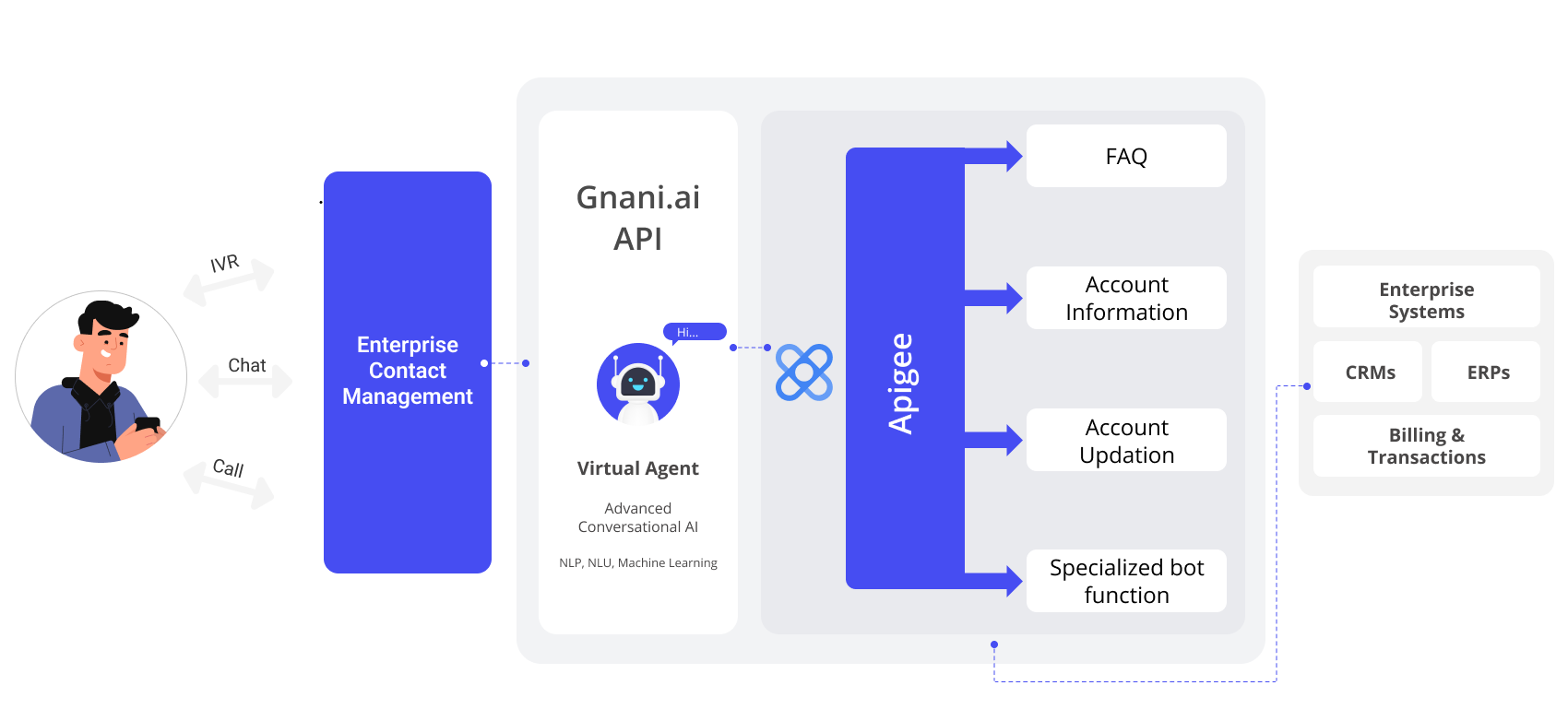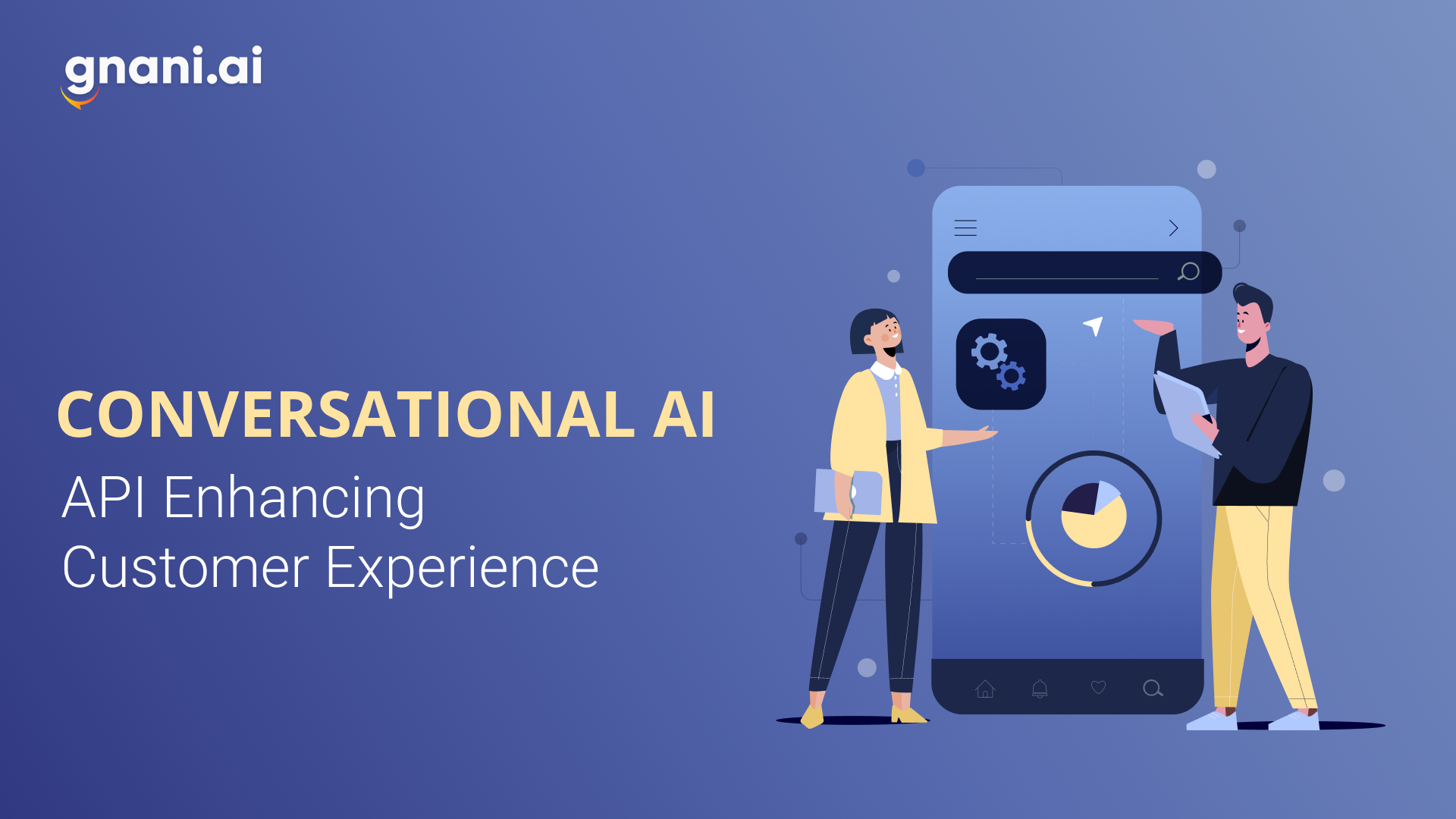As the world of digitalization accelerates its grasp on business and customer service, more and more people are leaning towards a more technically advanced approach. Speed, convenience, and effortlessness are the essential trilogy when it comes to seamless customer experience. This is exactly why the need for businesses to use Cloud networks, virtual assistants, and interactive bots comes in.
According to Shubhangi Vashisth, Senior Principal Analyst, Gartner- “On average, it takes about eight months to get an AI-based model integrated within a business workflow and for it to deliver tangible value. And by 2025, 70% of organizations will have operationalized AI architectures due to the rapid maturity of AI orchestration initiatives.”
Another global survey by Mckinsey & Company showcases that various industries attribute 20% of their earnings to AI. In addition to this, an increasing number plans on adopting AI in at least one sector of their business.
Instead of building a conversational AI from the ground up, brands can use APIs to easily extend their support with conversational AI voice bots and chatbots. In this post, let’s see how using conversational AI API will help you enhance customer experience.
Why Use Conversational AI API Instead of DIY
It is obvious that an ML and NLP expert development team is needed to create a proper conversational AI. In a typical scenario, building a conversational bot that can handle three to five intents will take two to three weeks. After building the bots, you have to train them with hundreds and thousands of datasets, and it will take three months to find the threshold limit and the bot’s level of understanding the intent and meeting customer satisfaction.
On the other hand, conversational AI API provides you the intelligence of months and years of work and refinement. The well-trained and seasoned neural-networks-based NLP & NLU helps AI to acquire a vast level of data to learn patterns and provide human-like customer interactions.
All you have to do is to integrate the API into your customer support and customer interactions channels. Within a few hours of integration work and database establishment work, you can provide an interactive customer experience with conversational AI.
How Conversational AI API Works
Nowadays, all brands are providing omnichannel customer engagement and customer support. The good thing with the conversational API is you can deploy the AI bots in all major communications channels like IVR, web, mobile app, chat service, contact-center-lines, etc.
Whenever a customer interacts with a brand, the virtual assistant or the AI bot will receive the customer. The NLP and the NLU engines in the AI bots process the information and provide appropriate answers in an interactive manner. All the processing happens within a fraction of a second so that the user will have a natural conversation experience, which is something most brands can’t provide by using rule-based chatbots.

Let’s take a real-world example. A customer calls the support desk to know about their last payment status. The virtual assistant understands the input, and the API will fetch the information from the database, CRM, billing software, or any relevant tool from the backend and inform the customer about the status of their last payment.
Benefits of Using Conversational AI API
When it comes to virtual agents and customer service integrations, powerful, cutting-edge technology has reportedly demonstrated its positive impact. Apigees/API management tool allows the ML(Machine Learning) onto the API, which simplifies various aspects of API operations. It serves as an open gateway for large or small companies to offer their customers a unique and personalized customer service that most businesses lack in the traditional customer interaction methods and support services.
From a client’s perspective, it is always a great thing when one can engage in prompt conversations. With virtual bots, it is possible to offer tailored customer service right to their preferred channel. AI can proactively predict the destination that the users are likely to be interested in and help aid that decision.
The appropriate response is also delivered in real-time and adapt to the complication of certain requests and refer the client to a live-service representative. It covers an entire customer relationship spectrum offering an enhanced interactive experience on both ends.
When a company deploys these solutions, it even unlocks global opportunities. Especially considering the recent advancement with multilingual conversational bots, it is able to communicate across regions and languages. This ability allows companies to be more accessible and adapt to customer requirements quickly and effortlessly.
There is a surging need for a more remote, accessible, and hands-on real-time customer service approach, especially in the post-pandemic world. In this context, Conversational AI API’s influence and impact are significantly impressive. Businesses can provide their existing and upcoming customers a pleasant customer experience without spending much time and money.
Gnani.ai conversational AI API provides a multilingual option, text to speech option, and multiple integration options. Request a demo to see how you can enhance your customer support and customer engagement bot.


